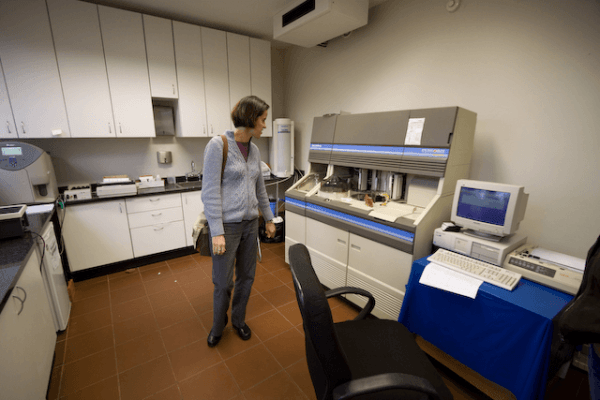In Part 1 of this article series, we discussed the relevance of HIV infection and the development of AIDS. We then gave a general overview of the CRISPR/Cas system in Part 2 of this series. Finally, this last post will synthesize the two to touch on how CRISPR/Cas can be applied to develop a treatment for HIV infection.
Image Source: Science Stills/Visuals Unlimited, Inc.
One recently published PNAS paper showed that working towards developing an HIV treatment is possible. By feeding Cas RNA sequences that direct the protein to both ends of the viral DNA, researchers made cuts on both ends and successfully removed the viral DNA from a significant proportion of the human DNA. They also showed that this system can possibly work as a vaccination. CRISPR/Cas provides us with the potential to prevent subsequent infection by the HIV virus because this genome editing can provide immunization against HIV-1 if the system retains the ability to recognize and respond to the HIV-1 DNA sequences.
Unfortunately, the difficulty of delivering this system to all latently infected cells while ensuring no cuts occur at unintended sites limits the therapeutic applications of this particular protocol.
Another possibility is suppressing DNA transcription. Some research has shown that the presence of the CRISPR/Cas system naturally prevents translation of the viral DNA by a mechanism known as histone modification. These histone proteins bind to DNA and condense the DNA so that it isn’t easily accessible for transcription. Another potential method would be binding an inactivated Cas protein to the human DNA. Doing so would create a “roadblock” of sorts and prevent the transcription of an RNA molecule. However, this research has yet to have been examined.
Overall, these studies provide exciting support for the possibility of eradicating the progression of HIV-1 into AIDS and has supplied the scientific community with some of the necessary tools and knowledge to take the next step towards the treatment and cure of HIV-1 infection. However, this research is very new, and there are still many roadblocks before this treatment can be used therapeutically. While these studies contribute vastly to the growing body of knowledge surrounding the previously unknown potential of CRISPR/Cas9 to combat HIV-1 infection, an optimal treatment of individuals infected with HIV-1 still remains to be discovered. However, the future uses of CRISPR/Cas are promising.
Featured Image Source: Lab Room by Heather Dowd










